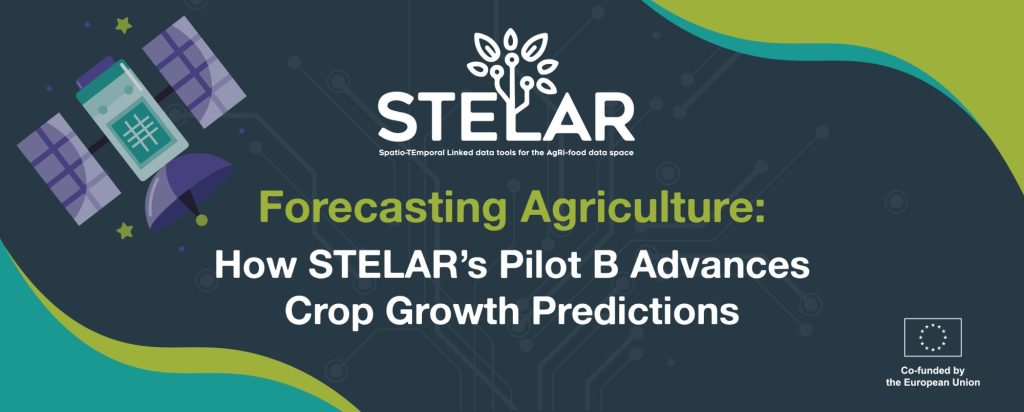Forecasting Agriculture: How STELAR’s Pilot B Advances Crop Growth Predictions

The Horizon Europe project STELAR is wrapping up on August 31st this year. Over the past three years, the project’s consortium, spanning 9 partners across Europe, has developed a novel platform for publishing and discovering metadata about datasets in the agrifood sector, while also testing its tools and methods in real-life conditions through three Pilots. One of these – Pilot B, led by VISTA (Germany) – has focused on forecasting crop growth much earlier in the season to help farmers make timely, informed decisions.
Early Forecasts to Support Farmers
Changing climate patterns and volatile markets make it increasingly difficult for farmers to plan their field activities ahead. Access to reliable data early in the growing cycle can be crucial. Pilot B demonstrates how artificial intelligence, Earth observation data, field segmentation, time series imputation, crop classification and advanced crop models can provide forecasts well before harvest.
"We need reliable data and we need data as early as possible in the season, which means that in the ideal case we want to have really good data at least 10 weeks before the harvest to have proper yield estimate."
Solveig Blöcher, Project Scientist at VISTA and member of the STELAR project consortium
Watch the video about Pilot B below.
Integrating Satellite Data and Crop Models
At the heart of Pilot B is the PROMET model, a computer simulation that accounts for water, energy, carbon and nitrogen cycles to represent crop growth. VISTA has combined this model with information from Sentinel-2 and other multispectral and hyperspectral satellites, including Landsat-8, -9 and hyperspectral sensors such as EnMAP. By drawing on different sensors and integrating field observations, the Pilot has been able to refine its forecasts and increase accuracy. Altogether, Pilot B processed nearly one terabyte of satellite imagery from different years and European regions. This large-scale test demonstrated how data fusion and machine learning can enhance crop growth predictions, support yield estimation, and improve agricultural risk management, while contributing to more sustainable farming practices.
What Comes Next
The work undertaken in Pilot B does not stop with this demonstration. Building on the results, the consortium will:
- Engage in policy discussions on data transparency and interoperability,
- Refine its tools through user feedback and co-creation,
- Collaborate with open-source communities to enhance usability and intelligence, and
- Explore integration with emerging AI solutions to further strengthen early crop growth predictions.
Collaboration Across Europe
Pilot B was led by VISTA (Germany), with contributions from ATHENA Research Center (Greece), Eindhoven University of Technology (Netherlands), University of the Bundeswehr Munich (Germany), and Foodscale Hub (Serbia).
Foodscale Hub lead the project’s Dissemination, Exploitation and Communication activities, while also supporting pilot preparation, KPI development, and ecosystem synergies to ensure sustainability of results.
For more information about Pilot B and the STELAR project, visit stelar-project.eu and follow STELAR on LinkedIn for updates.